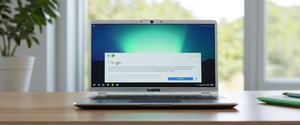
Android represents one of the most significant computing platforms in modern history, with over eighty percent of global mobile devices running the operating system, making it an extraordinarily attractive target for cybercriminals seeking to exploit massive user populations. The fundamental question of whether Android phones require dedicated antivirus software has evolved considerably from simple yes-or-no answers into a nuanced discussion dependent on individual usage patterns, device configuration, and tolerance for security risk. While Google has dramatically improved its built-in protection mechanisms through Google Play Protect and regular security updates, the reality of the current threat landscape reveals that circumstances exist in which third-party antivirus software provides meaningful additional protection that built-in systems cannot fully deliver. This comprehensive analysis examines the current security posture of Android devices, evaluates the genuine threats users face, explores when supplementary protection becomes advisable, and provides guidance for implementing a layered security approach appropriate to individual risk profiles.
The Android Threat Landscape and Current Security Vulnerabilities
Understanding Android’s Architectural Vulnerabilities
Android’s foundational architecture, built on open-source principles designed to maximize customization and flexibility, creates inherent security considerations that distinguish it fundamentally from more restrictive platforms. The open nature of Android’s codebase means that the underlying framework, while extensively scrutinized by Google’s security team and independent researchers, provides greater visibility into potential vulnerabilities than closed systems like iOS. This transparency, while beneficial for transparency and security research, also means that malicious actors can identify and exploit security gaps with greater ease than on proprietary systems. Furthermore, unlike iOS, Android allows users to sideload applications from sources outside the official Google Play Store, a capability that dramatically increases the potential attack surface for users who exercise this freedom without full understanding of the security implications.
The device manufacturer fragmentation present in the Android ecosystem creates additional security challenges that directly impact users’ ability to receive timely security updates. Apple controls both hardware and software for iOS devices, enabling rapid deployment of security patches across its entire installed base through centralized update mechanisms. Android, conversely, involves multiple hardware manufacturers including Samsung, OnePlus, Motorola, and numerous others, each of which customizes the Android OS to varying degrees and controls the update schedule for their devices. This fragmentation means that even after Google releases monthly security patches addressing critical vulnerabilities, many users may wait weeks or months for manufacturers to integrate and deploy those patches, leaving their devices vulnerable to known exploits during the interim period.
The Scale and Evolution of Android Malware
The statistical reality of Android malware prevalence provides sobering context for security decision-making. The AV-TEST Institute, which maintains comprehensive records of malware detection across platforms, registers nearly four hundred thousand new pieces of malware daily, with mobile devices representing an increasingly significant portion of these threats. Between June 2024 and May 2025, security researchers discovered over two hundred malicious applications on Google Play that collectively achieved more than forty million downloads, indicating that sophisticated threat actors successfully penetrate even Google’s official app store with surprising regularity. The growth trends are equally concerning, with malware targeting mobile devices experiencing a sixty-seven percent year-over-year increase, spyware increasing by two hundred twenty percent annually, and banking trojans reaching sophisticated levels of functionality unprecedented in previous years.
Recent malware families demonstrate the evolution of Android threats toward greater sophistication and profit-oriented functionality. Banking trojans like Anatsa, HOOK, Herodotus, and ToxicPanda represent a category of highly specialized malware designed specifically to compromise financial transactions by deploying overlay attacks that display fake login screens on top of legitimate banking and cryptocurrency applications. When users enter their credentials into these deceptive interfaces, the malware captures and transmits the information to remote command-and-control servers, enabling attackers to conduct unauthorized transactions, drain cryptocurrency wallets, and exploit financial accounts with devastating consequences for victims. The HOOK trojan alone supports over one hundred remote commands, including capabilities for ransomware overlay generation, NFC fraud orchestration, and behavior mimicry designed to bypass anti-fraud systems that rely on detecting machine-like speed of user input. Another critical vulnerability disclosed in November 2025, tracked as CVE-2025-48593, represents a remote code execution flaw in the Android System component that allows attackers to execute arbitrary code without any user interaction or additional privileges required, affecting Android versions thirteen through sixteen.
Malware Distribution Vectors and Infection Mechanisms
Understanding how malware reaches Android devices provides essential context for evaluating security decisions. While non-expert users often assume malware exclusively comes from sketchy third-party app stores and pirated applications, sophisticated threat actors increasingly employ deceptive techniques to infiltrate even the official Google Play Store. Malware developers disguise malicious applications as legitimate productivity tools, news readers, fitness trackers, camera filters, or games, enabling them to accumulate hundreds of thousands of downloads before detection. Once installed, some malware implements delayed activation, remaining dormant for days or weeks before initiating harmful behavior, a technique that helps evade detection by security researchers who test apps immediately after installation.
Beyond app-based infection vectors, Android users face threats through phishing links sent via SMS, email, and social media, malicious advertisements on compromised websites, infected APK files circulated through peer-to-peer networks and forums, and exploitation of unpatched vulnerabilities through zero-click attack mechanisms requiring no user interaction whatsoever. Banking trojans like the malware analyzed by Cyfirma researchers specifically target users with banking and cryptocurrency applications installed, leveraging accessibility services to gain control over device functionality and perpetrating overlay attacks with extraordinary precision. The malware first checks whether it operates on a genuine device or within security testing environments, enabling it to evade detection during analysis phases, then silently requests accessibility services permissions while masquerading as legitimate functionality, ultimately providing complete device control to remote attackers.
Android’s Built-In Security Architecture and Capabilities
Google Play Protect’s Evolving Effectiveness
Google has substantially upgraded Android’s native security infrastructure over the past several years, with Google Play Protect emerging as a meaningful defensive layer that demonstrates significant improvements in malware detection accuracy. As recently as a few years prior, Google Play Protect achieved detection rates of only approximately twenty percent against common malware samples, allowing approximately eighty percent of threats to slip through undetected. By November 2023, independent testing by AV-TEST revealed that Google Play Protect achieved ninety-eight point nine percent effectiveness against new viral agents and ninety-nine point eight percent effectiveness against widespread threats, representing dramatic improvement that positions it competitively with many third-party solutions in baseline detection capability.
Google Play Protect operates through a combination of local device scanning and cloud-based analysis performed by Google’s extensive malware analysis infrastructure. Before any application installation from Google Play, the system checks the app against a deep database of known malicious signatures automatically updated with newly discovered threats. After installation, Play Protect continues monitoring for suspicious behavior patterns, examining application functionality against known attack tactics, and can remotely disable applications that later prove malicious even after successful installation and widespread distribution. The system also integrates Safe Browsing technology, warning users about potentially dangerous websites, phishing attempts, and malicious downloads, particularly when browsing with Google Chrome.
However, Google Play Protect demonstrates meaningful limitations that prevent it from serving as a complete security solution for all users. Independent testing reveals false positive rates that exceed zero in some testing scenarios, indicating that the system occasionally flags benign applications as potentially malicious, creating false alarms that undermine user confidence. More importantly, Play Protect’s protection primarily extends to applications and file scanning, leaving vulnerable the multitude of files that accumulate on Android devices over time. The system cannot conduct scheduled scanning at user discretion but instead runs scans during idle periods when users are unlikely to notice issues, potentially delaying threat detection. While recent real-time analysis capabilities have begun rolling out to selected regions, global deployment remains incomplete, and sophisticated threats with delayed activation or encrypted payloads designed specifically to evade detection may pass through Play Protect’s defenses.
Supplementary Built-In Security Features
Beyond Google Play Protect, Android incorporates numerous built-in security mechanisms that collectively create a security foundation substantially more robust than commonly assumed. All Android devices implement encryption by default, protecting user data stored on the device through cryptographic methods that render information inaccessible without proper authentication credentials. The operating system provides biometric authentication options including fingerprint recognition and facial recognition, adding layers of authentication beyond PIN or password entry. Find My Device functionality enables remote location tracking, device locking, and data erasure for lost or stolen devices, providing recovery mechanisms unavailable in completely unprotected scenarios.
Android’s permission system, substantially refined through recent updates including Android 13’s granular media permissions and earlier improvements in runtime permissions, provides users with granular control over what data and device capabilities applications can access. Users can individually grant or deny permissions for location access, camera and microphone usage, contact access, calendar information, and numerous other sensitive functions, creating a permission-based sandbox model that restricts applications from accessing resources without explicit authorization. Samsung Knox, implemented on Galaxy devices, provides additional security infrastructure through hardware-based isolation and anti-tampering mechanisms protecting the operating system from manipulation. Google Play System updates, introduced with Android 10, provide a critical capability that allows Google to push security fixes directly to devices without waiting for manufacturers to approve and deploy updates through traditional Android OS update channels.
When Third-Party Antivirus Becomes Advisable

High-Risk Usage Scenarios
While Google Play Protect and native Android security features provide adequate protection for cautious users exercising disciplined security practices, specific usage scenarios create circumstances where supplementary third-party antivirus software substantially increases security posture. Users who frequently sideload applications from third-party sources outside Google Play encounter dramatically elevated malware risk, as sideloaded applications bypass Google’s application vetting process and receive no systematic security scanning before installation. The practice of sideloading introduces applications potentially developed without security considerations, distributed through compromised websites, or deliberately created with malicious functionality by threat actors specifically targeting users willing to circumvent official distribution channels.
Users who conduct financial transactions through banking applications, access cryptocurrency exchanges and digital wallets, or otherwise handle sensitive financial data on their devices face significantly elevated consequences if malware successfully infiltrates their systems. For these users, the potential financial loss resulting from compromised banking credentials justifies investment in additional protective layers beyond native security mechanisms. Similarly, users who frequently connect to public Wi-Fi networks, particularly unsecured wireless networks in hotels, coffee shops, and transportation hubs, face elevated risk from man-in-the-middle attacks and network-based malware distribution mechanisms that can compromise device security without requiring app-based malware installation. Users who handle sensitive work-related files, personal health information, or other confidential data classified as valuable require security protections that prevent unauthorized access to this information.
Protect Your Digital Life with Activate Security
Get 14 powerful security tools in one comprehensive suite. VPN, antivirus, password manager, dark web monitoring, and more.
Get Protected NowUsers with rooted devices, meaning devices with modified operating systems where root-level access has been granted to user applications, accept substantially elevated malware risk in exchange for the customization and control that rooting enables. Rooting removes the sandbox isolation that prevents applications from accessing system-level functionality, allowing malicious applications to modify the operating system itself, disable security features, and persist across device restarts in ways impossible on standard Android installations. Additionally, users of older Android versions, particularly those running Android 9 or earlier, operate with substantially reduced security posture compared to users on current versions, as manufacturers have largely ceased providing security updates for legacy devices, leaving known vulnerabilities unpatched and exploitable.
Device and Manufacturer Considerations
Certain devices provide meaningfully better security foundations than others based on update delivery patterns and underlying security architecture. Google Pixel devices and Samsung Galaxy devices represent the most reliable platforms for security update delivery, with Google typically pushing updates to Pixel devices within days of public release and Samsung maintaining reliable monthly update schedules for recent Galaxy models. These manufacturers provide extended update windows compared to lesser-known device manufacturers, meaning users can reasonably expect security patches for longer device lifespans. Conversely, users of budget devices, devices from lesser-known manufacturers, or devices that have ceased receiving OS updates face substantially reduced update frequency, with some devices receiving no security updates after initial release. For these users, supplementary antivirus software provides important additional protection against exploits targeting unpatched vulnerabilities.
Evaluating Third-Party Antivirus Solutions
Performance Metrics and Malware Detection Capabilities
Selection of an appropriate third-party antivirus solution requires understanding the actual effectiveness of available options, as independent testing organizations provide meaningful data regarding detection rates and false positive performance. The AV-TEST Institute, which has evaluated antivirus software for over two decades, maintains comprehensive testing results for Android solutions based on standardized methodologies. Recent testing in September 2025 evaluated thirteen mobile security products using default settings, measuring protection effectiveness, performance impact, and usability factors on a standardized point system with maximum scores of six in each category. Multiple products achieved perfect or near-perfect scores including AhnLab, Avast, AVG, Avira, Bitdefender, F-Secure, Kaspersky, McAfee, Norton, Protected.net TotalAV, securiON, and Sophos, all achieving 100 in protection categories.
Google Play Protect itself earned certification with a sixty-three point three detection score in the protection category, demonstrating substantial improvement but trailing the leading third-party solutions that achieved perfect one hundred scores. AV-Comparatives testing from June 2023 showed Play Protect identifying ninety-nine point eight percent of test samples, again trailing competitors achieving perfect one hundred percent detection, and importantly revealing a twelve false positive readings versus zero false positives for competing solutions, indicating unnecessary security alerts that undermine user experience. These testing results suggest that while Google Play Protect has dramatically improved, leading third-party solutions maintain slight advantages in detection accuracy while maintaining superior false positive performance.
Bitdefender Mobile Security consistently emerges as a top-performing option across multiple independent testing organizations, achieving one hundred percent malware detection rates while consuming less than one percent daily battery drain. Norton Mobile Security similarly achieves excellent detection rates while providing comprehensive additional features including unlimited VPN access, password manager functionality, and identity theft monitoring. Avast Mobile Security offers competitive detection performance at a free tier with optional paid enhancements, while ESET Mobile Security provides some of the fastest scanning performance available, albeit with relatively high resource consumption on older devices. Kaspersky, Trend Micro, and Malwarebytes similarly offer certified protection though with varying feature sets and performance characteristics.
Real-World Performance Considerations
Selection of antivirus software must account for practical performance implications beyond raw malware detection statistics. Many third-party antivirus applications, particularly less sophisticated implementations, achieve malware detection through persistent background scanning processes that continuously examine device files and app behavior, a practice that can consume substantial battery resources, degrade device performance during multitasking, and generally diminish the user experience to the point where users disable or uninstall the software. Modern antivirus solutions designed specifically for mobile platforms employ more efficient techniques that minimize background resource consumption, integrating with Android’s native security architecture rather than duplicating functionality, resulting in nearly imperceptible performance impact for well-designed solutions.
Most users fail to recognize the limitations of antivirus software in detecting sophisticated threats, particularly zero-day exploits targeting previously unknown vulnerabilities and advanced persistent threats employing multiple attack techniques requiring sustained attacker interaction. Traditional antivirus approaches that rely on signature matching against known malware samples cannot detect novel malware never encountered before, though modern machine learning-based approaches employing artificial intelligence algorithms show promise in identifying suspicious behavior patterns even when specific malware samples have never been analyzed previously. The practical reality is that antivirus software provides important protection against common, widespread threats but cannot guarantee immunity against determined attackers employing advanced techniques or zero-day exploits.
Advanced Android Malware Threats and Recent Developments
Banking Trojans and Financial Targeting
The emergence of sophisticated banking trojans represents perhaps the most consequential recent development in Android malware evolution, as these threats specifically target financially valuable information with devastating consequences for victims. The Anatsa banking trojan, discovered in 2020, has undergone continuous evolution, expanding from targeting approximately six hundred fifty financial organizations in 2022 to targeting over eight hundred thirty financial services worldwide by late 2025, including German and South Korean financial institutions. Anatsa employs sophisticated evasion techniques including obfuscation of malicious code, dynamic code loading that downloads attack payloads only after installation, and abuse of Android’s accessibility services to capture user input, intercept SMS messages, and manipulate on-screen displays.
The HOOK trojan discovered in late 2024 expanded from an initial banking trojan into a multi-purpose malware platform supporting one hundred seven remote commands as of October 2025, enabling attackers to deploy ransomware-style overlay screens, conduct NFC fraud orchestration, display fake unlock screens to capture device PIN codes, and systematically steal cryptocurrency wallet recovery phrases. The trojan implements particular sophistication through humanized fraud techniques designed specifically to evade timing-based anti-fraud detection systems, introducing random delays of three hundred to three thousand milliseconds between simulated user input events to create the appearance of human rather than automated interaction. Herodotus, another recently discovered banking trojan targeting Italy and Brazil, similarly abuses accessibility services and implements advanced evasion through behavior mimicry designed to bypass behavioral biometric detection systems.
These banking trojans frequently distribute through dropper applications that initially appear benign but download and install malicious payloads after achieving installation. The distribution occurs through phishing websites, fake GitHub repositories, and SMS-based social engineering campaigns that trick users into downloading applications from sources outside Google Play. Once installed and granted accessibility services permissions, the trojans display fake login overlays on top of legitimate banking applications, capturing credentials when users attempt to authenticate, then sending captured information to remote command-and-control servers operated by threat actors who subsequently access banking systems using stolen credentials to conduct unauthorized transactions.
Zero-Click Vulnerabilities and System-Level Threats
The disclosure of CVE-2025-48593 in November 2025 revealed a critical remote code execution vulnerability in Android’s System component affecting versions thirteen through sixteen, allowing attackers to execute arbitrary code with no user interaction required. This vulnerability represents a particularly dangerous threat category where no user action whatsoever, not even app installation or link clicking, triggers the malicious code execution. The attacker exploits insufficient input validation in the system component to achieve code execution with no additional privileges required, potentially allowing complete device compromise enabling data theft, malware installation, or ransomware deployment. Google released the critical patch as part of the November 2025-11-01 security patch level, with manufacturers including Samsung incorporating the patch into their monthly security updates.
CVE-2025-38352 and CVE-2025-48543 represent additional privilege escalation vulnerabilities discovered in 2025, exploiting local flaws in the Linux kernel’s POSIX CPU timers subsystem and the Android Runtime component respectively. These vulnerabilities allow malicious applications to break out of Android’s app sandbox through race condition exploitation and memory corruption bugs, potentially enabling attackers to escape the isolation mechanisms designed to prevent apps from accessing system resources or interfering with each other. While both vulnerabilities require malicious app installation to exploit, representing lower severity than zero-click flaws, they underscore the ongoing evolution of sophisticated attack techniques as security researchers discover and patch previous vulnerabilities, prompting threat actors to identify new exploitation paths.

Prevalence of Specific Malware Families
Current threat intelligence reveals particular malware families achieving high prevalence through successful distribution mechanisms and evasion techniques. Adware represents the dominant threat category as of 2025, accounting for approximately sixty-nine percent of all detected Android malware, nearly double the prevalence from the previous year. While adware typically represents a less severe threat than banking trojans or ransomware, it nonetheless degrades device performance, consumes data resources, and exposes users to phishing and other secondary attacks launched through malicious advertisement networks. The Joker family, previously dominant with thirty-eight percent prevalence in 2024, dropped to twenty-three percent in 2025, though remaining among the most significant threats through its information-stealing capabilities that harvest SMS messages, contact information, and device identifiers.
Spyware experienced dramatic growth of two hundred twenty percent year-over-year, driven by families including SpyNote, SpyLoan, and BadBazaar deployed for surveillance, extortion, and identity theft purposes. Geographic variation in threat prevalence indicates that attackers have increasingly sophisticated geographic targeting, with India, the United States, and Canada representing fifty-five percent of all detected attacks as of 2025, while Italy and Israel experienced eight hundred to four thousand percent year-over-year attack increases indicating deliberate campaigns targeting specific regional populations. These threat trends underscore that Android malware has become increasingly sophisticated, increasingly targeted toward specific financial and demographic categories, and increasingly successful in achieving large-scale compromise despite Google’s improving defenses.
Best Practices and Layered Security Approach
Immediate Actions for Protecting Android Devices
Implementing effective Android security does not require complex configurations or extensive changes to normal device usage, though it does require consistent attention to several fundamentals. Maintaining current software represents perhaps the most critical single action Android users can take, as manufacturers release security patches monthly addressing newly discovered vulnerabilities, and delaying patch installation leaves devices vulnerable to known exploits. Users should enable automatic updates in system settings to ensure patches deploy immediately upon availability rather than relying on manual checking, and should verify that updates install by confirming the security patch level matches current dates in Settings > About Phone > Android Version. Users with older Android versions or devices no longer receiving updates should seriously consider upgrading to current-generation devices from manufacturers known for reliable update delivery including Google Pixel or Samsung Galaxy, or should implement supplementary antivirus protection.
Maintaining discipline regarding app installation represents the second critical practice, requiring installation exclusively from Google Play Store rather than sideloading from third-party sources, and exercising caution regarding which applications from official stores receive installation permissions. Before installing any application, users should review the permissions requested, questioning whether those permissions logically relate to the application’s stated functionality. A flashlight application genuinely requiring microphone or camera access beyond basic flashlight functionality should raise suspicion, as should permissions for address book access, location tracking, or SMS reading for applications lacking legitimate need for such access. Applications exhibiting permission requests inconsistent with claimed functionality should be avoided entirely, as the request pattern often indicates malicious intent.
Checking accessibility services monthly represents an essential maintenance practice, as malware frequently abuses this system feature to gain elevated control over device functionality despite otherwise being confined to standard app restrictions. Users should navigate to Settings > Accessibility and review which applications have been granted accessibility services permissions, removing this permission from applications lacking legitimate accessibility needs such as magnification tools or screen reader software. Banking and cryptocurrency applications should explicitly not have accessibility services permissions granted, as the permission enables overlay attacks and credential theft mechanisms.
Advanced Security Configurations
Beyond foundational practices, users seeking additional protection can implement several advanced techniques increasing security posture. Utilizing a virtual private network creates encrypted tunnels for device traffic, preventing network observation of browsing activity and app communications, and providing meaningful protection on unsecured public Wi-Fi networks where attackers could otherwise intercept unencrypted communications. However, users should recognize that VPNs provide network-level privacy enhancement rather than malware protection, and should select VPNs from established security companies maintaining transparent privacy policies rather than free VPN services that often monetize user data collection. Using privacy-focused browsers including Firefox Focus eliminates persistent browsing history, disables tracking cookies, and prevents information leakage to advertisers and analytics networks, though users must recognize that browser choice alone cannot prevent malware from compromised apps.
Enabling biometric authentication including fingerprint and facial recognition in addition to PIN-based unlocking creates multi-factor authentication that significantly increases device compromise difficulty despite not preventing sophisticated attacks. Regularly deleting browsing history, cached data, and temporary files reduces the information available to malware that might successfully compromise the device, and Samsung devices can implement these deletions through the Battery and Device Care application’s device protection scanning and clearing functions. Users with work-related data or sensitive information should consider enabling work profile containers available through Android Enterprise functionality, which separates work applications and data from personal data in isolated security containers, limiting malware compromise impact to the affected profile rather than affecting entire device data.
Recognition of Limitations and Practical Trade-Offs
Users implementing Android security must acknowledge fundamental limitations inherent to any protection approach. No security solution, including Google Play Protect and third-party antivirus combined, can guarantee complete immunity against sophisticated threats or zero-day exploits. Sophisticated attackers with substantial resources have demonstrated capability to compromise Android devices through exploits that sophisticated security researchers have not yet discovered or that operate outside typical defense parameters. Users should expect that despite diligent security practices, devices could potentially be compromised by determined attackers or through completely novel attack vectors, and should accordingly maintain conservative assumptions regarding what sensitive data deserves storage on mobile devices versus reservation for offline or more highly controlled environments.
The relationship between security and usability requires conscious trade-off decisions where maximum security would render devices functionally unusable for normal purposes. Installing every available antivirus application would consume substantial device resources and create duplicate scanning processes that degrade performance, making this approach counterproductive despite theoretical security maximization. Refusing to install any applications would prevent legitimate functionality but would be incompatible with normal device usage. Rather, users should implement security measures proportionate to their actual risk profiles, with careful users conducting primarily banking and social media activities requiring substantially less protective intervention than users conducting sensitive work or extensive financial transactions.
Decision Framework: When Android Antivirus is Actually Necessary
User Risk Assessment
Determining whether third-party antivirus protection becomes genuinely necessary requires honest assessment of individual usage patterns and risk tolerance. Users who strictly download applications exclusively from Google Play Store, maintain current Android versions, practice careful permission reviews, and avoid public Wi-Fi networks for sensitive activities likely receive adequate protection from Google Play Protect and native Android security features without supplementary antivirus. These users represent what security researchers term “typical users” conducting standard social media, messaging, mapping, and entertainment activities on devices with reliable manufacturers providing timely security updates. For these users, antivirus software provides minimal additional protection while consuming device resources, making installation difficult to justify on practical grounds.
Conversely, users sideloading applications, conducting cryptocurrency transactions, managing sensitive work data, or operating devices no longer receiving security updates substantially benefit from third-party antivirus protection providing real-time scanning that identifies threats before they compromise device security. Users handling financial data including banking credentials, credit card information, or cryptocurrency wallet recovery phrases gain meaningful security improvement through antivirus solutions detecting malware attempting to harvest this sensitive information. Users frequently connecting to public Wi-Fi networks face elevated compromise risk, though VPN usage provides complementary protection to antivirus software addressing the network-based threats that antivirus primarily cannot prevent. Users with work devices containing sensitive corporate information, healthcare information protected by privacy regulations, or government-classified information face heightened consequences from potential compromise, justifying investment in comprehensive security including third-party antivirus.
Selection of Appropriate Solutions
Users determining that antivirus installation serves their security needs should select solutions from established security companies with lengthy track records, transparent privacy policies, and demonstrated commitment to regular updates. Bitdefender Mobile Security emerges as a consistent top performer in independent testing while maintaining minimal impact on device performance and battery consumption, making it an excellent choice for users seeking comprehensive protection without perceptible degradation to device usability. Norton 360 provides additional identity theft protection and comprehensive privacy features alongside solid malware detection, appealing to users concerned about data breach consequences and identity theft risks. Avast and AVG provide solid protection with free options containing meaningful functionality, though premium versions unlock full feature sets.
Users should avoid unknown free antivirus applications despite zero-cost installation, as many such applications contain malware themselves or aggressively monetize user data collection through extensive tracking and advertising, negating security benefits through introduction of different security risks. The decision to install antivirus represents a conscious commitment to maintaining regular updates, ensuring the security software itself remains current as new threat families emerge and detection methods evolve. Antivirus software providing protection against malware from twelve months prior but never receiving updates could prove counterproductive if malware families continue evolving, rendering detection signatures obsolete.
The Verdict: Android Antivirus Unpacked
The question of whether Android phones require antivirus software in 2025 does not admit a universal answer applicable to all users, but rather depends substantially on individual circumstances, usage patterns, and risk tolerance. Google’s built-in security infrastructure through Google Play Protect, encryption, biometric authentication, and regular security updates provides genuinely meaningful protection for cautious users exercising disciplined security practices, contradicting earlier assertions that Android requires universal third-party antivirus installation. For typical users conducting standard activities on current-generation devices from reliable manufacturers, native security mechanisms likely suffice without supplementary antivirus protection.
However, specific user populations benefit substantially from supplementary antivirus protection that addresses limitations inherent to Google’s native defenses. Users sideloading applications abandon Google’s automatic security screening, users conducting financial transactions face elevated consequences from compromise, and users with devices no longer receiving security updates operate with meaningful unpatched vulnerabilities that third-party antivirus can help address. The evolving threat landscape, with sophisticated banking trojans demonstrating increasing capability, zero-click vulnerabilities enabling complete device compromise without user action, and malware successfully penetrating Google Play despite enhanced screening, suggests that security professionals increasingly recognize the value of layered protection combining native defenses with supplementary solutions.
The most appropriate approach for most users involves first implementing fundamental practices including maintaining current software, disciplined app installation from official stores only, regular accessibility services review, and cautious permission granting, thereby establishing a strong security foundation utilizing native Android mechanisms. Users with elevated risk profiles should then evaluate whether their circumstances justify third-party antivirus installation, selecting solutions from established companies demonstrating genuine protection capability through independent testing. This layered approach, combining improved native Android security with selective supplementary protection, represents the current consensus position among security professionals regarding optimal Android protection for diverse user populations in 2025.






